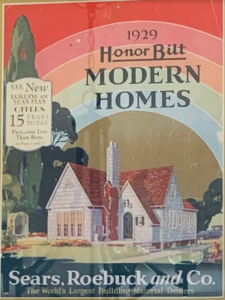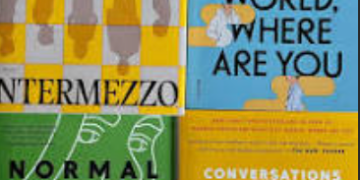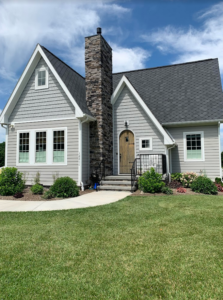
When her husband passed away, Linda decided to move to the Shenandoah Valley where her nephew, Dr. Bob Harris, was planning to set up a dental practice. But instead of looking for an old house to fix
up, Linda decided to build a new house that was modeled after a place she saw in a 1929 Sears & Roebuck catalogue. After studying the plans for the Sears Mitchell house, Linda decided to add a few extras, adding more space to the floor plan. T
he result: a lovely mix of modern and vintage that pays tribute to the Sears houses of yesteryear. Linda has a library full of information on house kits of the past, and she is a wealth of information. I spent a lovely morning sitting with her in her breakfast nook, discussing old houses. While Sears wasn’t the only company to offer kit houses, it was one of the most popular places to buy a do-it-yourself house.
Linda also shared information on the Aladdin Company (who advertised the “original Knocked Down Houses”), the Gordon-Van Tine Company, and Montgomery Ward’s mail-order homes. The kit houses were referred to as “the houses that came on the train.” Because literally, that’s how they were delivered. The house kit usually came in two boxcars, and those boxcars contained everything a builder would need to construct an entire house – framing boards cut to size, nails, and even paint.
Although much of the house was pre-measured and pre-cut, buyers did have a lot of choice as well. They could, of course, choose the model, but they also chose door and window styles, the kind of wood, exterior cladding, and paint colors. While each company offered a catalogue full of house styles, most of the homes were
copies of styles popular in the US from 1900 – 1980. Types of Sears houses ranged from the modestly priced Hudson -$474.00 – to the more elaborate Carlton (only offered for one year– 1918) which cost the buyer $5,118 – about $100,000 today.
Several factors contributed to the phasing out of the mail order home. Stricter building codes, the growing popularity of mobile homes, and the construction of subdivisions gave folks affordable alternatives to kit homes. This “modern” housing came without the trouble of having to pay freight costs and hire a carpenter. Sears sent out its final catalogue in 1940. From 1908 and 1940, Sears sold over 70,000 homes in 370 different styles.
Although no one eagerly waits at the depot for the first sight of their new home, there are folks
such as Linda who appreciate the home styles of days gone by. Her lovely home stands as a tribute to the hard work and ingenuity of designers and architects of days gone by.



































